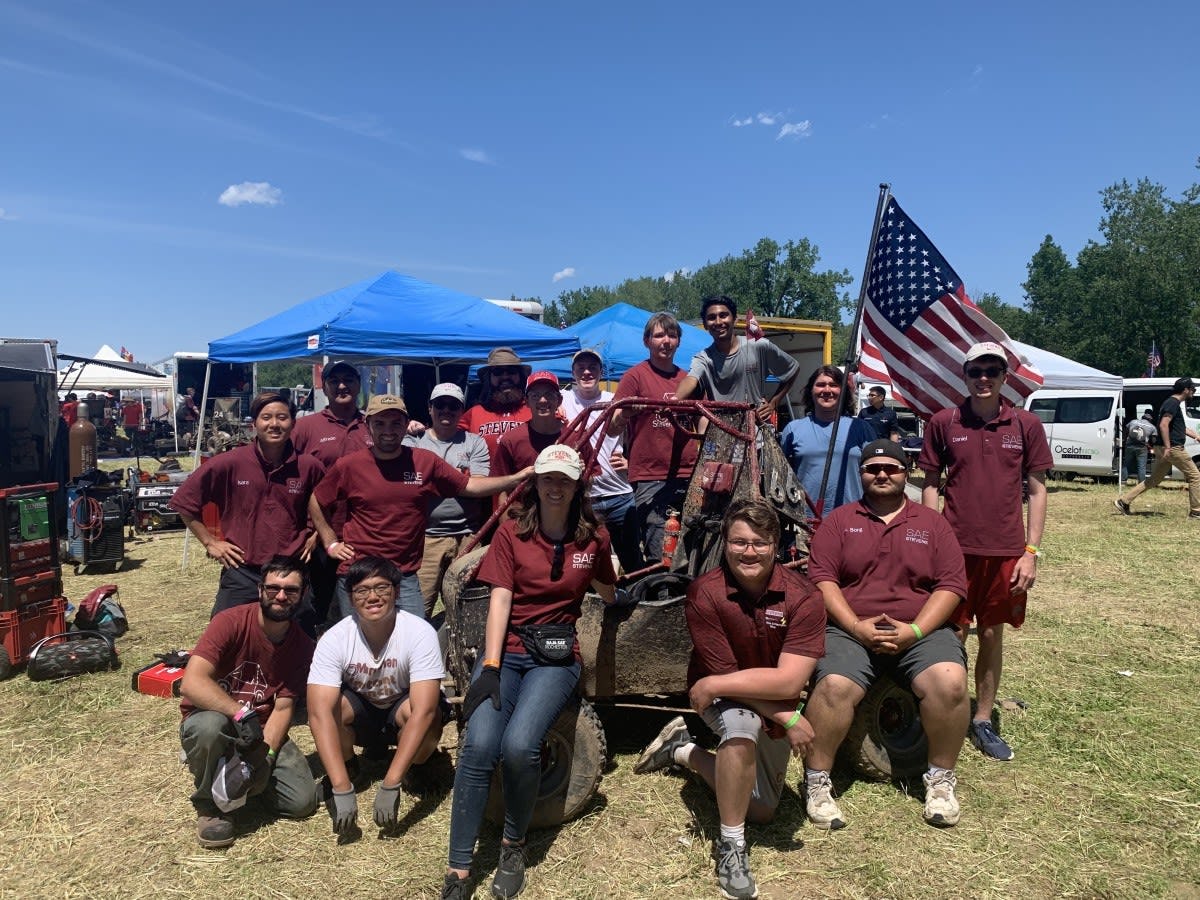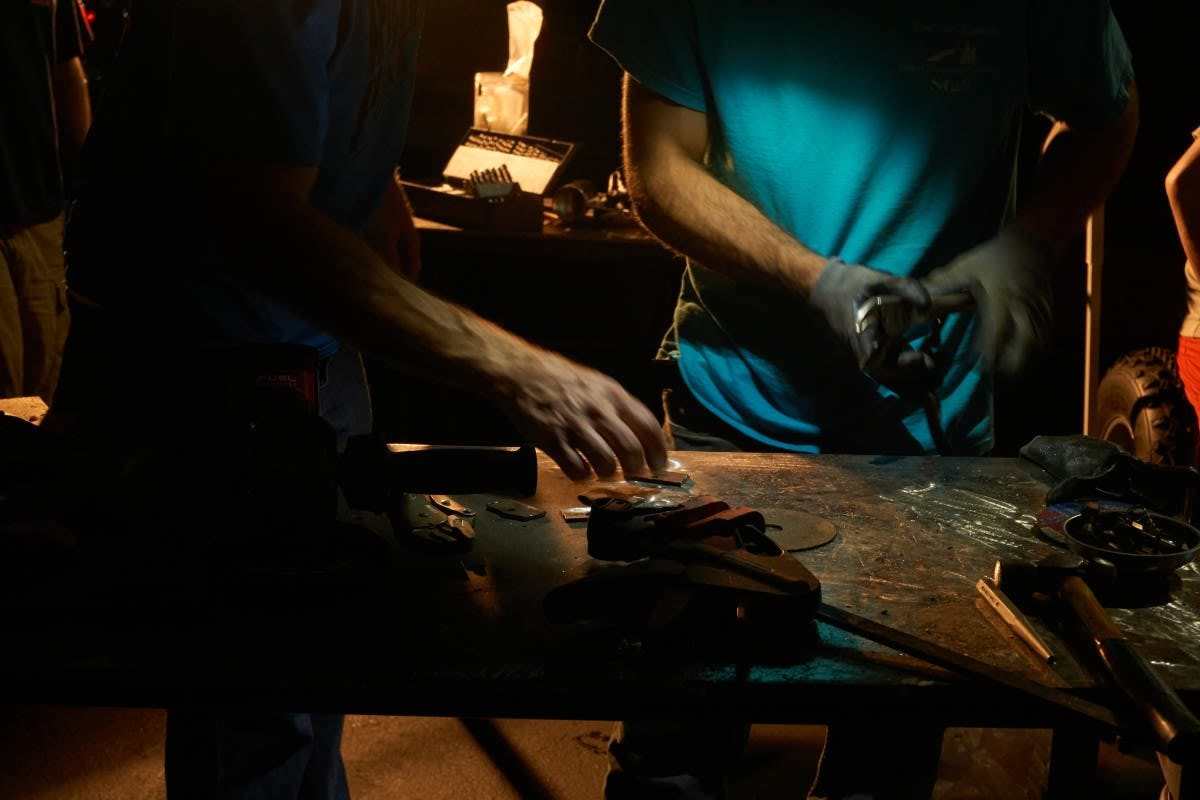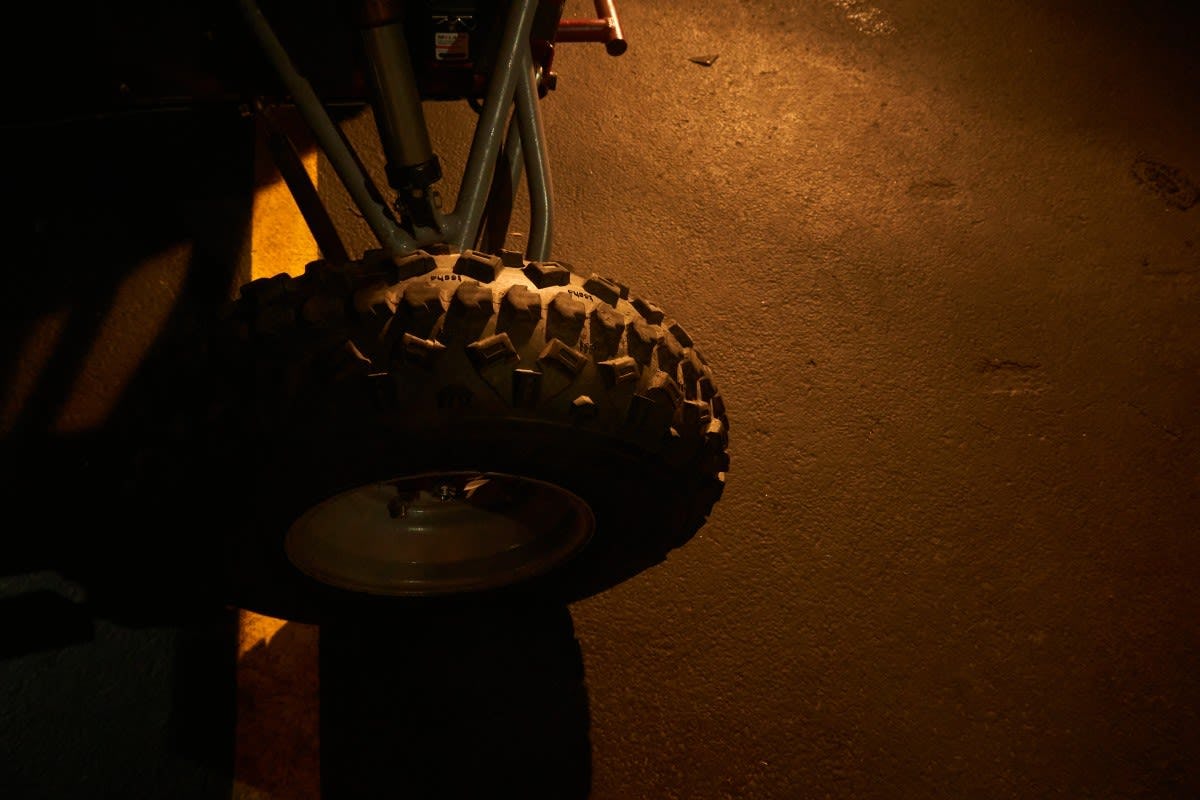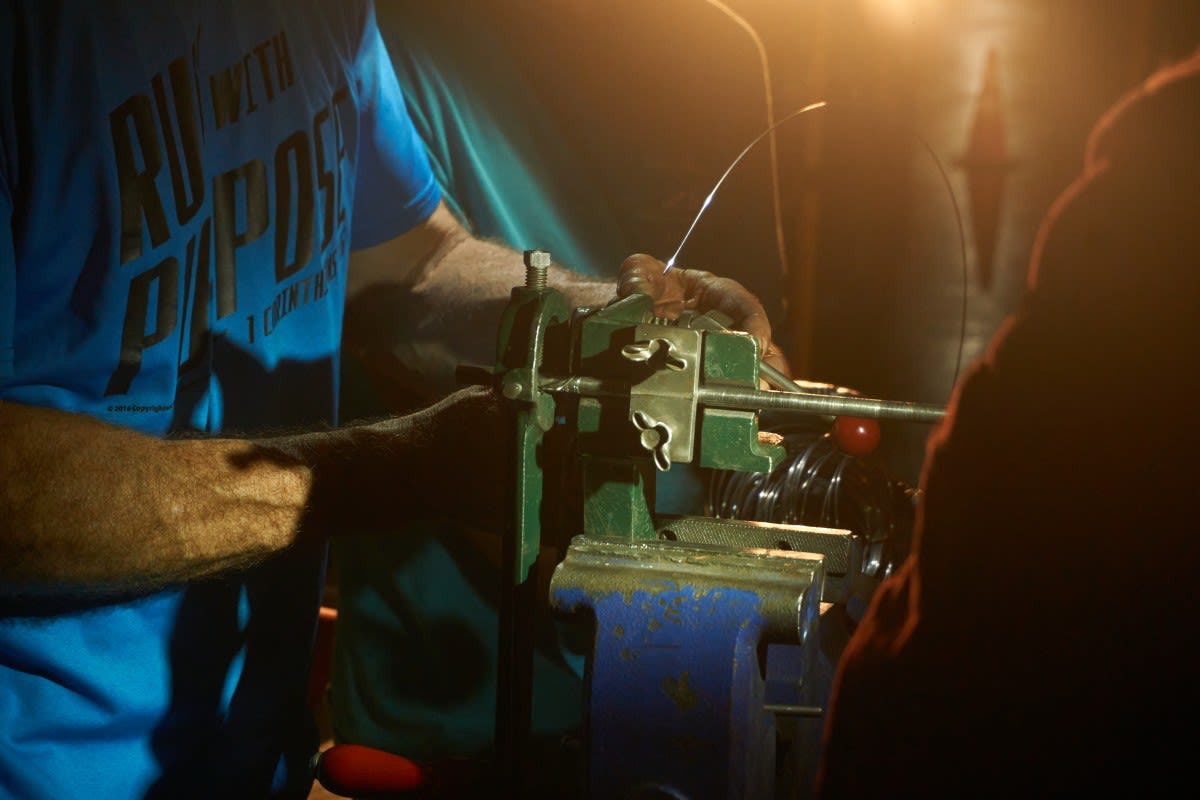On a Dirt Road Paved with Challenges, Stevens Students Show Grit and Determination
The annual Baja SAE helps make students better engineers, problem solvers, and team players.
For members of the Stevens chapter of the Society of Automotive Engineers (SAE) ― also known as the SAE Baja Club at Stevens ― getting their offroad racing vehicle on the dirt road at Baja SAE Rochester marked the culmination of a year’s worth of work.
Baja SAE is a yearly competition held by SAE, a professional organization that promotes student participation in automotive engineering. The competition encourages young engineers to apply the theory they’ve learned in the classroom to a complex, real design problem―designing, building, and testing an offroad vehicle, then racing it in competition with other schools.
This year, 16 Stevens students ― sophomores, juniors, and seniors majoring in mechanical engineering, electrical engineering, and chemical engineering ― collaborated on designing and building a safe and fully functional all-terrain sporting vehicle, mostly on Stevens’ campus in Hoboken, New Jersey.
“SAE Baja is one of the best learning opportunities an engineering student is presented with at Stevens,” said Edward Pieluc ’24, a Stevens mechanical engineering major. “You learn how to apply the skills that you learn in the classroom to a real-life project.”
Every vehicle entered in the Baja SAE competition undergoes rigorous testing — for acceleration and braking, handling, hill climb, suspension and endurance — as well as technical inspections for safety.
The effort poses many challenges and opportunities for teams to learn from them. But this year, in particular, presented new difficulties, testing the team from the very start of the project. The team faced challenges previous teams haven’t had to face, from COVID-19 restrictions to lack of access to materials due to global supply chain disruptions.
Despite what seemed like insurmountable challenges, the team demonstrated resilience throughout the entire project.
“The team’s participation in this year’s competition represents how, through sheer determination, teamwork, and hard work, big challenges can be overcome,” said Paul McClelland, Director of the MakerCenter at Stevens. He emphasizes the importance of having these skills in the real world in the context of today’s global challenges.
Challenge accepted: Social distancing and supply chain woes
Stevens’ SAE Baja Club members typically work in a small, two-bay garage situated off-campus. This dedicated space allows the team to cut, bend, and notch all the tubes for the vehicle frame and use a plasma cutter to fabricate the many tabs needed to mount various components to the frame. The team does electrical work and body panel manufacturing at the garage throughout the year, too.
However, at the start of the Fall semester of 2021, the team found out that they could not weld in the garage as teams had done in years past.
“With COVID-19 restrictions, the number of individuals working at the garage at a single time was limited,” said mechanical engineering major Christopher Solan ’23. He explains that this hindered the team’s ability to put together productive workdays where everyone could show up and work on essential tasks.
The alternative was to use the school’s machine shop space to weld the car together.
“This meant that for the year, we had to carry the frame of the car across campus at least a couple dozen times,” he says, highlighting that the distance between the garage and the machine was not close enough to make it a seamless process.
“We ended up doing a lot of our work outside, which meant we could have as many people working as possible,” said mechanical engineering major Julia Wierzbicki ’23. But then, winter came.
“It became more challenging as the weather grew colder during the winter,” explained Wierzbicki.
Additionally, thanks to global supply chain issues, materials needed to build the vehicle were priced higher than expected.
“Everything cost us a lot more than it used to; in particular, steel prices were exorbitant,” explained electrical engineering major Tyler Cuttitta ‘25. Though prices of vital materials were high, he explained it was better than not being able to source materials at all.
Battle-tested and ready for what’s ahead
Having overcome COVID-19 restrictions, cold weather and supply chain issues, they were ready to meet their primary objective: to get their offroad racing vehicle on the road at Baja SAE Rochester.
“From the start of the school year to the last hour of competition weekend, everyone put in the maximum amount of effort to ensure we got the car where it needed to be,” said Wierzbicki.
The element of time added to the pressure, according to Gerard Piserchia III '23, a mechanical engineering major.
“I was already used to working on teams under a significant time crunch from having to work on group projects in my design classes at Stevens,” he said. “Even though my primary task was recording footage from the driver's perspective, when problems arose in critical systems, I pivoted away from my own tasks to support my teammates in whatever ways I could.”
By the arrival of the event, the team had already been rigorously challenged. However, issues arose during the four-day competition.
Upon registering their car on day one, the team faced an issue at the engine check stage. The team fixed it, and their vehicle passed to be entered in the competition.
On day two, the team put their vehicle through a technical inspection and delivered a design presentation. While the presentation went well, the inspection part was delayed.
But on day three, the team passed the technical inspection and moved on to the dynamic events, which tested the performance of the braking system and the vehicle’s acceleration, sled pull and maneuverability. Minor issues were present during the events on day three. In the suspension and traction event, the team started out doing very well, crossing several obstacles that many other teams could not. But near the end of the obstacle course, an attempted jump ended up ripping a frame tube out of the car.
The team pushed through, worked together to resolve the issue, and resumed the next morning ― Day four: race day.
The team repassed inspection and got ready for the endurance race. All looked good during the first three laps. Then, on the fourth lap, a bolt holding the rear upper right lateral link had come undone, causing the shock to break.
With the help of a competing school, the Stevens team replaced the shock and kept racing.
Other minor issues came up, including throttle cable issues, but the team completed the endurance race with all other competitors.
“All of these challenges were largely overcome only through the diligence and dedication of the club members,” said Solan, who explained that were many times throughout the year and during competition where the easy and tempting thing to do would have been to quit and walk away. “Yet, none of the members let this kind of thinking discourage them, and we persevered,” he said.
“It was not always easy, but tough days are the best builders of grit and determination,” said Wierzbicki, who enjoyed the experience because it was an opportunity to design something on paper or a computer and then see it brought to life.
“I learned a lot throughout this process that will make me a better engineer in the future,” said Edward Pieluc.
For Cuttitta, the end of this year’s competition means the beginning of the next.
“We get to do it all over again for next year,” he said. “The work has already started.”





